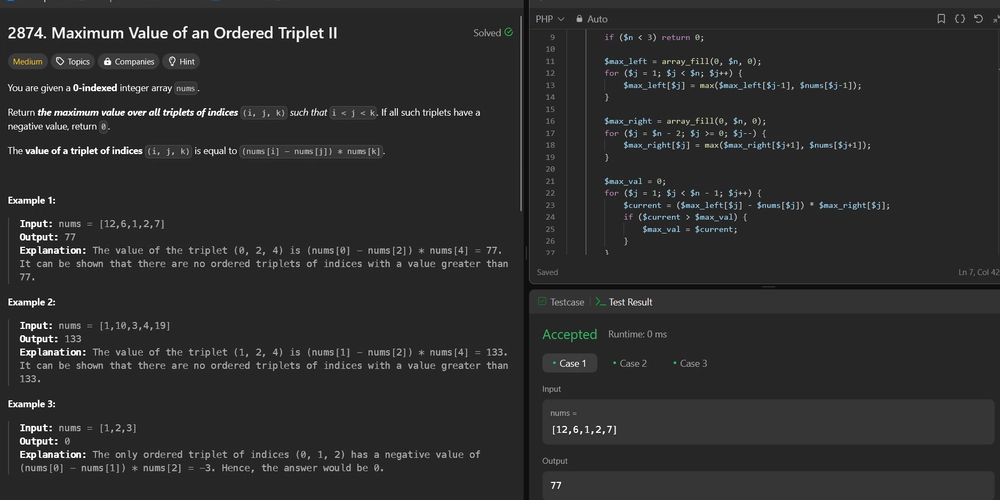Mastering Concurrency, Multithreading, and Synchronization in Java – A Step-by-Step Guide
Concurrency and multithreading are fundamental concepts for any backend or system-level developer. They play a critical role in building high-performance, scalable, and robust applications. This detailed, step-by-step guide will help you master these concepts with practical examples and best practices. 1. Introduction to Concurrency and Multithreading What is Concurrency? Concurrency is the ability of a program to perform multiple tasks simultaneously. It allows different parts of a program to run independently, enhancing performance and responsiveness. What is Multithreading? Multithreading is a specific form of concurrency where multiple threads run in parallel within a single program. Each thread represents a separate path of execution. Concept Definition Process An independent program with its memory space. Thread A lightweight sub-process sharing the same memory space. Concurrency Managing multiple tasks simultaneously. Parallelism Actual execution of multiple tasks at the same time. 2. Creating Threads in Java 2.1. Extending Thread Class class MyThread extends Thread { @Override public void run() { System.out.println("Thread is running..."); } } public class ThreadExample { public static void main(String[] args) { MyThread t1 = new MyThread(); t1.start(); } } 2.2. Implementing Runnable Interface class MyRunnable implements Runnable { @Override public void run() { System.out.println("Runnable thread is running..."); } } public class RunnableExample { public static void main(String[] args) { Thread t1 = new Thread(new MyRunnable()); t1.start(); } } Best Practice: Prefer Runnable over Thread because it promotes better design by decoupling task definition from thread execution. 3. Thread Lifecycle State Description New Thread is created but not started. Runnable Thread is ready to run, waiting for CPU time. Blocked Waiting to acquire a lock. Waiting Indefinitely waiting for another thread's signal. Timed Waiting Waiting for a specified time. Terminated Thread has finished execution. 4. Concurrency Problems Common Issues Race Condition – Two or more threads accessing shared data leading to inconsistent results. Deadlock – Two or more threads are waiting for each other indefinitely. Livelock – Threads keep changing states but make no progress. Starvation – A thread is denied CPU access due to other high-priority threads. 5. Synchronization in Java Synchronization is the process of controlling the access of multiple threads to shared resources. 5.1. synchronized Keyword Synchronizes a method or block to allow only one thread to access it at a time. 5.1.1. Synchronized Method class Counter { private int count = 0; public synchronized void increment() { count++; } public int getCount() { return count; } } 5.1.2. Synchronized Block class Counter { private int count = 0; public void increment() { synchronized (this) { count++; } } public int getCount() { return count; } } 5.2. Lock Interface Provides more control compared to synchronized. import java.util.concurrent.locks.Lock; import java.util.concurrent.locks.ReentrantLock; class Counter { private int count = 0; private final Lock lock = new ReentrantLock(); public void increment() { lock.lock(); try { count++; } finally { lock.unlock(); } } public int getCount() { return count; } } Approach Flexibility Performance synchronized Less Generally Fast Lock High Slightly Slower 6. Advanced Concurrency Tools 6.1. volatile Keyword Ensures visibility of changes to variables across threads. private volatile boolean running = true; 6.2. Atomic Variables Provides thread-safe operations without locking. import java.util.concurrent.atomic.AtomicInteger; AtomicInteger count = new AtomicInteger(0); count.incrementAndGet(); 6.3. Executors Framework Creates and manages thread pools. import java.util.concurrent.ExecutorService; import java.util.concurrent.Executors; ExecutorService executor = Executors.newFixedThreadPool(5); executor.execute(() -> System.out.println("Task executed")); executor.shutdown(); Executor Type Description newFixedThreadPool(n) Pool with a fixed number of threads. newCachedThreadPool() Expands as needed, reuses idle threads. newSingleThreadExecutor() Single-thread executor. 7. Thread Communication 7.1. wait() and notify() Used for inter-thread communication within synchronized context.

Concurrency and multithreading are fundamental concepts for any backend or system-level developer. They play a critical role in building high-performance, scalable, and robust applications. This detailed, step-by-step guide will help you master these concepts with practical examples and best practices.
1. Introduction to Concurrency and Multithreading
What is Concurrency?
Concurrency is the ability of a program to perform multiple tasks simultaneously. It allows different parts of a program to run independently, enhancing performance and responsiveness.
What is Multithreading?
Multithreading is a specific form of concurrency where multiple threads run in parallel within a single program. Each thread represents a separate path of execution.
| Concept | Definition |
|---|---|
| Process | An independent program with its memory space. |
| Thread | A lightweight sub-process sharing the same memory space. |
| Concurrency | Managing multiple tasks simultaneously. |
| Parallelism | Actual execution of multiple tasks at the same time. |
2. Creating Threads in Java
2.1. Extending Thread Class
class MyThread extends Thread {
@Override
public void run() {
System.out.println("Thread is running...");
}
}
public class ThreadExample {
public static void main(String[] args) {
MyThread t1 = new MyThread();
t1.start();
}
}
2.2. Implementing Runnable Interface
class MyRunnable implements Runnable {
@Override
public void run() {
System.out.println("Runnable thread is running...");
}
}
public class RunnableExample {
public static void main(String[] args) {
Thread t1 = new Thread(new MyRunnable());
t1.start();
}
}
Best Practice: Prefer Runnable over Thread because it promotes better design by decoupling task definition from thread execution.
3. Thread Lifecycle
| State | Description |
|---|---|
| New | Thread is created but not started. |
| Runnable | Thread is ready to run, waiting for CPU time. |
| Blocked | Waiting to acquire a lock. |
| Waiting | Indefinitely waiting for another thread's signal. |
| Timed Waiting | Waiting for a specified time. |
| Terminated | Thread has finished execution. |
4. Concurrency Problems
Common Issues
- Race Condition – Two or more threads accessing shared data leading to inconsistent results.
- Deadlock – Two or more threads are waiting for each other indefinitely.
- Livelock – Threads keep changing states but make no progress.
- Starvation – A thread is denied CPU access due to other high-priority threads.
5. Synchronization in Java
Synchronization is the process of controlling the access of multiple threads to shared resources.
5.1. synchronized Keyword
Synchronizes a method or block to allow only one thread to access it at a time.
5.1.1. Synchronized Method
class Counter {
private int count = 0;
public synchronized void increment() {
count++;
}
public int getCount() {
return count;
}
}
5.1.2. Synchronized Block
class Counter {
private int count = 0;
public void increment() {
synchronized (this) {
count++;
}
}
public int getCount() {
return count;
}
}
5.2. Lock Interface
Provides more control compared to synchronized.
import java.util.concurrent.locks.Lock;
import java.util.concurrent.locks.ReentrantLock;
class Counter {
private int count = 0;
private final Lock lock = new ReentrantLock();
public void increment() {
lock.lock();
try {
count++;
} finally {
lock.unlock();
}
}
public int getCount() {
return count;
}
}
| Approach | Flexibility | Performance |
|---|---|---|
synchronized |
Less | Generally Fast |
Lock |
High | Slightly Slower |
6. Advanced Concurrency Tools
6.1. volatile Keyword
Ensures visibility of changes to variables across threads.
private volatile boolean running = true;
6.2. Atomic Variables
Provides thread-safe operations without locking.
import java.util.concurrent.atomic.AtomicInteger;
AtomicInteger count = new AtomicInteger(0);
count.incrementAndGet();
6.3. Executors Framework
Creates and manages thread pools.
import java.util.concurrent.ExecutorService;
import java.util.concurrent.Executors;
ExecutorService executor = Executors.newFixedThreadPool(5);
executor.execute(() -> System.out.println("Task executed"));
executor.shutdown();
| Executor Type | Description |
|---|---|
newFixedThreadPool(n) |
Pool with a fixed number of threads. |
newCachedThreadPool() |
Expands as needed, reuses idle threads. |
newSingleThreadExecutor() |
Single-thread executor. |
7. Thread Communication
7.1. wait() and notify()
Used for inter-thread communication within synchronized context.
synchronized (lock) {
lock.wait(); // Releases the lock and waits
lock.notify(); // Wakes up a waiting thread
}
| Method | Description |
|---|---|
wait() |
Makes the current thread wait. |
notify() |
Wakes up a single waiting thread. |
notifyAll() |
Wakes up all waiting threads. |
8. Deadlock Example
class A {
synchronized void foo(B b) {
System.out.println("Thread1 trying to call B's last()");
b.last();
}
synchronized void last() {
System.out.println("Inside A's last()");
}
}
class B {
synchronized void bar(A a) {
System.out.println("Thread2 trying to call A's last()");
a.last();
}
synchronized void last() {
System.out.println("Inside B's last()");
}
}
Avoid deadlocks using lock ordering or tryLock() from ReentrantLock.
9. Best Practices for Multithreading
- Use
ExecutorServiceinstead of manually creating threads. - Minimize shared data between threads.
- Use
synchronized,Locks,volatile, andAtomicwisely. - Avoid unnecessary synchronization as it can degrade performance.
- Identify thread-safety requirements early in development.
- Test for concurrency issues using stress tests and tools like FindBugs.
10. Common Interview Questions
- Difference between
synchronizedandLock? - What is
volatileand when to use it? - How to avoid deadlocks?
- What is a thread-safe class in Java?
- Explain thread pool benefits.
Conclusion
Concurrency, multithreading, and synchronization are crucial for building robust and high-performance applications. Understanding these concepts in depth will help you write efficient, thread-safe, and scalable software. Practice writing concurrent programs, experiment with different synchronization techniques, and always consider thread-safety when dealing with shared resources.
Next Steps:
- Implement thread-safe classes using
synchronizedandLock. - Use
ExecutorServicein real projects. - Explore advanced concurrent utilities like
CountDownLatch,Semaphore, andCyclicBarrier.
Happy Coding!
Would you like diagrams or code snippets with more real-world scenarios for your blog?














































































